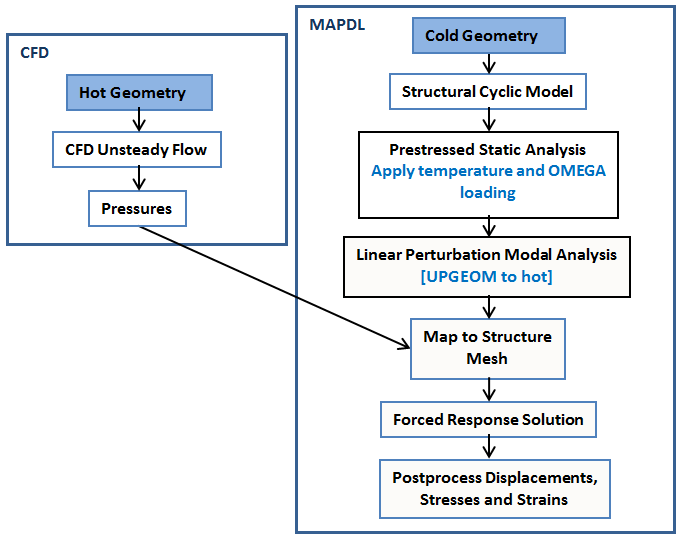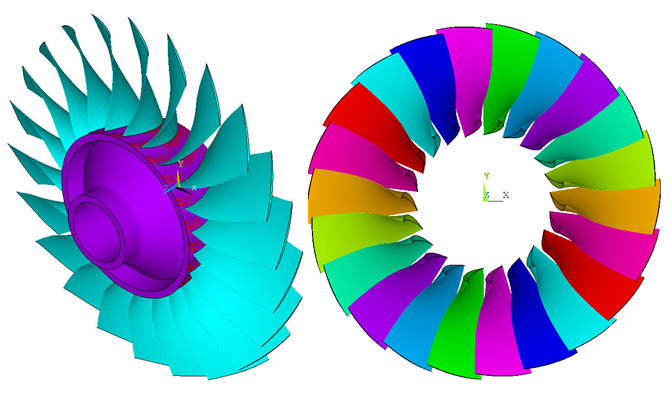The NASA Rotor 67 fan bladed disk in this example is a subsystem of a turbofan’s compressor set used in aerospace engine applications. This model represents a challenging and industrial example for which the detailed geometry and flow information is available in the public domain.
The following figure shows a cyclically symmetric sector of the Rotor 67 fan:
The model consists of a disk and a fan blade with a sector angle of 16.364 degrees. The full model consists of 22 fan blades, as shown:
The following analyses are performed on the cyclic-sector model:
Modal
Perturbed prestressed modal following a nonlinear base static solution
Perturbed prestressed mode-superposition harmonic following a nonlinear base static solution
Perturbed prestressed modal on a reduced system with aerodamping
Perturbed prestressed modal on a reduced system with aerodamping and mistuning
Perturbed prestressed mode-superposition harmonic with aerodamping and mistuning
The perturbed modal and perturbed mode-superposition harmonic cyclic symmetry analyses include the initial prestressed condition from nonlinear static analysis. The initial stress state from the nonlinear static analysis is produced by considering the rotational effects on the fan and the thermal loading applied on all nodes of the fan model.
In addition, the perturbed mode-superposition harmonic cyclic symmetry analysis also includes unsteady flow pressure that is acting on the fan blades. This unsteady flow pressure is calculated for the 3D viscous flow of air modeled as an ideal gas for a fan running at 16043 RPM with a 10% inlet distortion using Ansys CFX.
Modal, perturbed modal, and perturbed mode-superposition harmonic analyses of the full 360° model are also performed to validate the accuracy of the cyclic-sector model results.
The complete workflow to perform the forced-response analysis is as follows:





